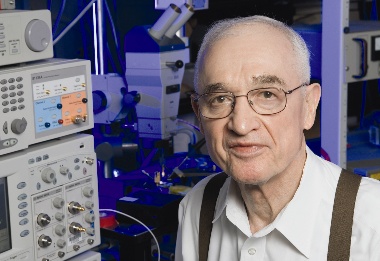
It is 50 years since laser scientist Dr Nick Holonyak and his team of researchers at General Electric made the breakthrough with a new type of alloy that allowed them to create the first practical, visible-spectrum LED and paved the way for today's LED lighting.
Like many inventions, Holonyak's had a prehistory of diverted projects, good ideas that got nowhere and flashes of genius dowsed by circumstances.
In 1907, Marconi radio engineer Captain Henry Round applied a direct current to a crystal detector, an alternative to the newly developed diode, and saw that it emitted light, making him the first to record the effect of electroluminescence. His attention reverted to wireless, a move that helped change the course of naval warfare.
Electroluminescence
In 1927, Oleg Losev, a self-educated Russian scientist, published a paper describing how the silicon carbide crystal diodes used in radios glowed when they were excited by an electrical current. He continued publishing papers on electroluminescence until 1941. He is thought to have tried and failed to win Albert Einstein's interest in the subject before he starved to death in the siege of Leningrad in 1942.
Meanwhile in 1939, in Hungary, Zoltán Bay and György Szigeti had patented a silicon carbide electroluminescent lighting device regarded as the forerunner of the LED proper. William Shockley, co-inventor of the transistor, filed a patent for an infrared LED in 1951.
In 1962, Nick Holonyak created the first practical, visiblespectrum LED at GE's Advanced Semiconductor Laboratory in Syracuse, New York. It emitted red light and worked at room temperature. Holonyak, who is also credited with inventing the dimmer switch, apparently foresaw applications for the LED such as electronic displays and indicator lights, but what he really wanted to do was to make lasers.
By 1972, green, orange and yellow LEDs were available and the fi rst blue LEDs had been developed by Jacques Pankove at RCA. These early blue LEDs were too feeble to be of practical use but in the 1990s high-brightness gallium nitride LEDs were discovered. In 1993, Shuji Nakamura created the high-brightness blue LED, despite having been told by his company, Nichia, to drop the project, according to lore. This was significant for lighting, because blue, red and green LEDs could now be added together to create white light.
These days, most so-called 'white' LEDs are in fact blue LEDs with a layer of yellow phosphor that converts the light into a broad spectrum. The thickness of the phosphor determines whether the white light is warm or cold. There are also white LEDs made from zinc selenide that simultaneously emit blue and yellow light to the same effect.
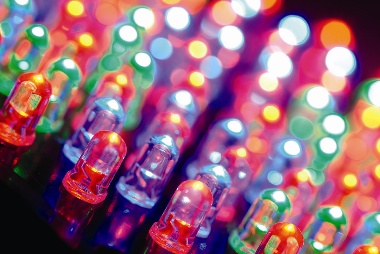
Market development
When GE put its red gallium arsenide LEDs on the market in the early sixties they retailed at a massive $260 each. Nevertheless, by the time Monsanto entered the market in 1968 sales doubled each month. Today, US-based LED researcher Strategies Unlimited reckons that today's global market for LED replacement lighting will grow from $2.2 billion in 2011 to $3.7 billion in 2016, although average selling prices are falling by 14 per cent a year.
LED lighting supplier Verbatim began developing and selling LED lighting products for consumer and business applications in 2010, based on core technologies provided by Mitsubishi Chemical Corporation. Verbatim says that in 2011 general illumination applications accounted for the largest share (35 per cent) of the LED market, followed by mobile devices (30 per cent), and signalling/signage applications (18 per cent).
The range of potential uses for solid state lighting is expanding rapidly, so LEDs are now a credible alternative to traditional lamps in a number of applications.
"I can't remember when anyone came in to show us anything other than LED," says Firefly Lighting Design's Peter Veale.
"LED is where we are at," agrees David Atkinson, of David Atkinson Lighting Design. "Fluorescent has still got its place, as does metal halide, but the whole point about LED is that it is continually evolving. I would love to continue to use incandescent light sources but I am predominantly specifying LED equivalent for projects now."
In mainstream applications, cost is the biggest obstacle to LED market penetration. In the office, for example, LEDs are having a tough time superseding fluorescent. However, Fisher predicts even that may change soon. He says: "There is 5 to 8 per cent market penetration now, which will be 60 to 75 per cent by 2020. That's going to increase capacity and, with twice the efficacy in the next five to seven years, we'll be able to use fewer LEDs to achieve the same result and they'll be at a more competitive price. Market dynamics will drive the cost down, making LED more attractive to use, compared with linear fluorescent."
Office applications
That doesn't, however, mean designers aren't already finding applications for LEDs in offices. Atkinson, for example, recently installed suspended, edge-lit LED panels as office lighting. He says: "What's nice is they're so thin (48-50mm thick) so as a suspended feature they're quite unobtrusive, almost like thin light boxes.
Of course there's an engineering approach, to conform to the strict guidelines for office lighting, but [with LEDs] there is also the opportunity to be more creative with lighting the office environment."
Notwithstanding such innovations, the technology inevitably lends itself to some applications more than others. Lighting has compiled a survey to determine the top five scenarios in which specifying LED is an absolute no-brainer. At the time of writing we had received 183 responses from lighting professionals who, between them, voted for the architectural lighting applications where LEDs are clearly ahead of other sources. The Top Five, in traditional countdown reverse order, are:
5 Dynamic digital installations
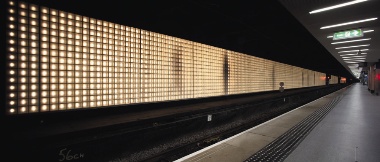
Peter Veale of Firefly Lighting Design says when a client recently for asked for LED dots on a restaurant facade he immediately suggested adding lighting controls to turn it into a 'video screen'. He says: "Other than a huge TV, I can't think of any technology other than LED that would be able to do that job and they loved it." The top choices of Jonathan Hodges, of Jason Bruges Studio, were LED tape, linear lighting and edge lighting; unusually shaped recessed and integrated luminaires, and dynamic digital installations or video matrices. "I'd vote for facade lighting, but only if it means media facades, but I don't view LEDs as being suitable for architectural flood lighting applications yet," he says.
4 Streetlighting
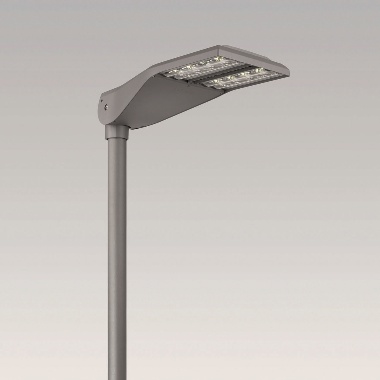
"LED streetlighting is now more efficient than most other traditional sources. Because of the small source it is possible to control the light better ensuring it goes where it is intended," says Mike Simpson, technical director at Philips Lighting. "The fact that PFIs now choose LED over other solutions must also show that it is also the most economical solution." Kevan Shaw at KSLD, however, thinks the appearance of LED streetlighting is not clear-cut. He says "I don't like any streetlighting applications I have seen. LEDs have a long way to go."
3 Downlights
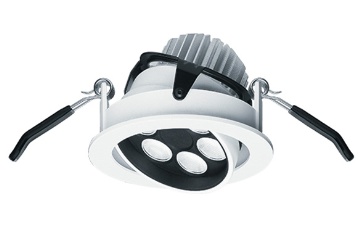
GE's Simon Fisher says: "In downlighting, LEDs are moving from decorative effect to a main area and ambient lighting solution. LEDs have been in colour change lighting, signage and so on for a while, but it is emerging as a credible light source it its own right." By contrast, Dominic Meyrick says: "I'm not saying LEDs in downlighters aren't OK, but there's a long way to go before every project we do uses an LED downlighter."
2 Emergency lighting
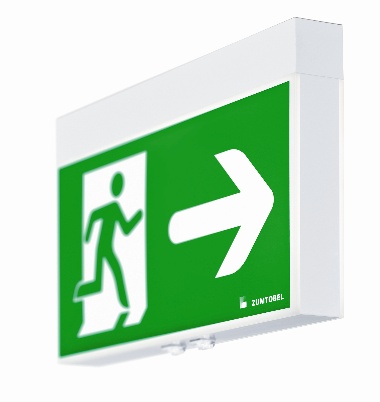
Kevan Shaw thinks LED emergency lighting is a 'no-brainer'. Meyrick points out that "architects always moan about emergency lighting fi ttings, because they are too bulky. But if we put LEDs inside a fi tting, they worry about the cost." That said, he predicts: "As LEDs are small and even the batteries are minute, all emergency lighting will eventually go to LED."
1 LED tape
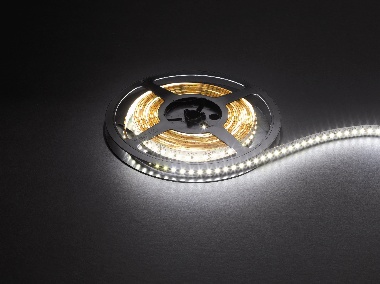
"Where LED has excelled is in the integration of lighting into the architectural fabric," says Paul Nulty, of Paul Nulty Lighting Design. "Linear LEDs, LED tapes and so on have been more widely accepted than spots, because you can build them into joinery and do something exciting, rather than just replacing a fitting. You can build LED into smaller and smaller details. The simplest example is putting LED under a shelf; but, whether it's integrating LEDs into a piece of unitry or joinery or replacing a balustrade spindle with a bit of LED extrusion, it's the miniaturisation that comes with LED that is the most exciting change."





